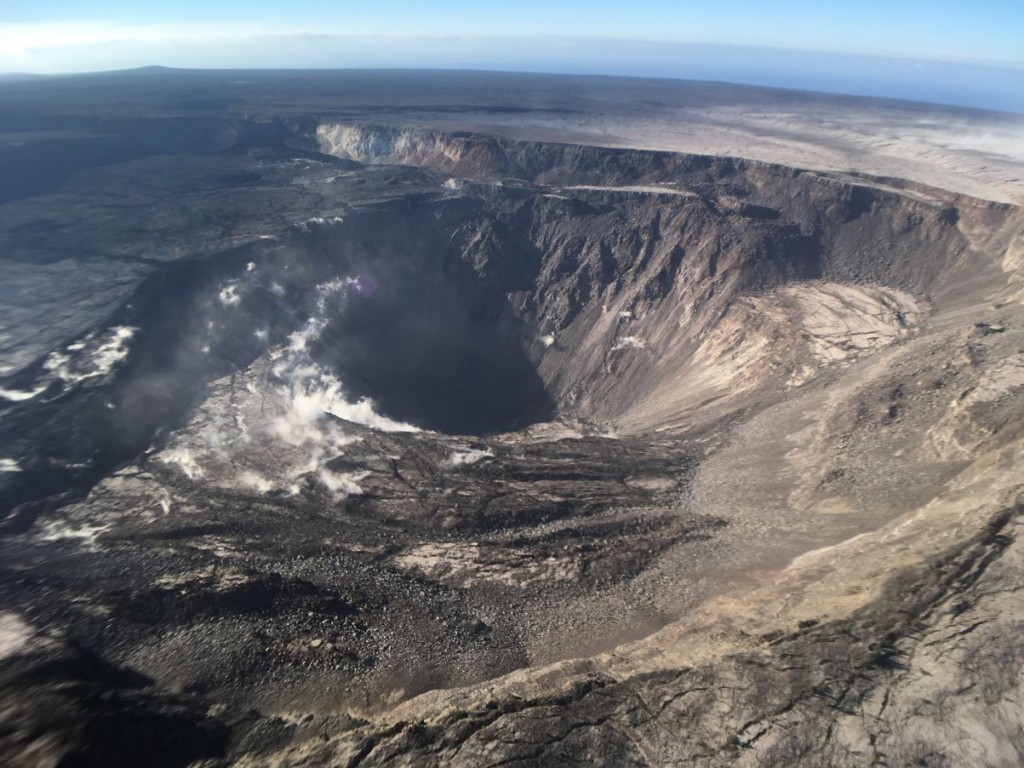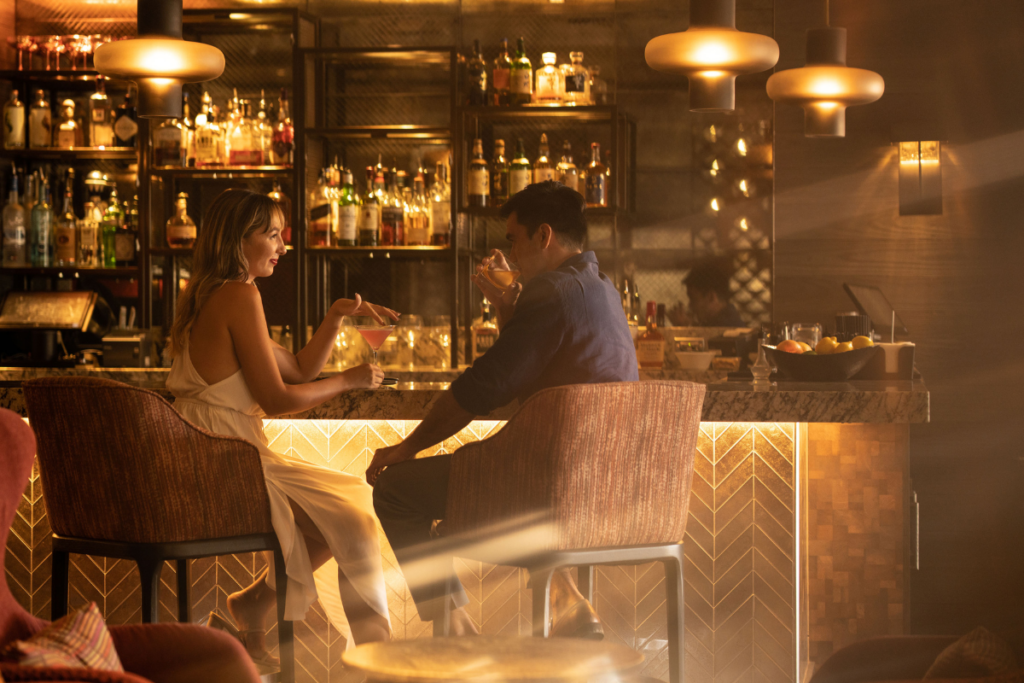Hawaii’s Kilauea Volcano: What travelers to the Big Island need to know
Stay up-to-date with the changes at Kilauea Volcano and the Lower East Rift Zone lava flow.

8/21/18:
The Hawaii Volcanoes National Park set a goal to reopen parts of the park by September 22, as long as the current pause in earthquakes and collapse-explosion events at the summit of Kilauea continues.
8/20/18:
The lava pond at Fissure 8 has crusted over, so the only lava visible now is at the coastline, though that is slowly diminishing as well. This morning, USGS scientists did see “gas jets throwing spatter (fragments of glassy lava),” which could be a sign that this is a pause in activity rather than it being a completion of activity.
At the summit, earthquakes are negligible and the Hawaii Volcanoes National Park is using the lull to assess damages and create a recovery plan.
Scientists warn that it’s still too soon to tell if changes “represent a temporary lull or the end of the LERZ (Lower East Rift Zone) eruption and/or summit collapse activity. In 1955, similar pauses of five and 16 days occured during an 88-day-long LERZ eruption. During the Mauna Ulu eruption (1969-1974), a 3 1/2-month pause occurred in late 1971.”
8/7/18:
Activity at Fissure 8 has decreased and the earthquakes at Kilauea Volcano summit have quieted down since its last collapse on August 4. There’s a small active lava lake inside Fissure 8, but much of the 8-mile lava river has hardened over. No other fissures are active; no lava was seen in Puu Oo. There is still a significant amount of lava entering the sea, however, at Kapoho Bay and Ahalanui. Active lava still threatens Isaac Hale Park and the Pohoiki boat ramp.
The United States Geological Survey states that these “changes considered together imply that the rate of magma leaving the summit to feed the Lower East Rift Zone eruption has decreased,” but it’s not possible to know how long this will last or if things will change.
The Hawaii Volcanoes National Park remains closed, except for the Kahuku Unit of the park.
8/5/18:
The United States Geological Survey (USGS) released a then and now photo of Halemaumau Crater, showing the changes that took place since the new eruption in the Lower East Rift Zone and the ongoing summit collapses.

7/30/18:
The ongoing Kilauea eruption has made history as the longest Lower East Rift Zone eruption. The record was last set in 1955.
7/12/18:
A popular visitor and local spot, the Ahalanui warm ponds was taken by the lava flow.
06/18/18:
The lava on the Island of Hawaii has continued to flow, claiming many homes that lay in its path and filling the entirety of Kapoho Bay and the Waiopae tide pools. With lava now flowing freely into the ocean, there are various ways to watch this natural spectacle unfold, such as with Kalapana Cultural Tour’s personable and cultural boat tour. Currently, the lava outbreaks are still limited to the island’s Puna district, with fissure 8 being the most active of the bunch, and the Hawaii Volcanoes National Park remains closed.
Original story below from 5/29/18:
It’s been nearly four weeks since the May 3rd lava outbreak on the island of Hawaii. While the majority of the island remains safe for visitors and locals, there has been an increase in activity in the isolated Puna subdivisions. As the number of fissures continues to rise, here’s what travelers to the island need to know.
1. Yes, it’s still safe and there are many things to do
With terms such as acid rain, lava bombs and major eruption being thrown around in news headlines, visions of Hawaii being some sort of apocalyptic wasteland may come to mind. This is not the case at all. The majority of the island remains unaffected by the ongoing volcanic activity, with the biggest disruption for visitors being the closure of Hawaii Volcanoes National Park. Airports, hotels, restaurants and activities are still open and operating. Hilo’s still lush, there are friendly manta rays to snorkel with in Kailua-Kona and the summit of Mauna Kea is as awe-inspiring as ever.
2. Vog pollution has increased downwind from Kilauea Volcano
First, understand that vog (volcanic smog) isn’t unusual for the Big Island, and looks like a haze, dimming what would normally be a bright blue sky. This commonly occurs, and the vog can spread to the other Hawaiian Islands. However, due to Halemaumau Crater’s ash clouds and the lava outbreaks in the Puna District, the pollution on the Big Island has increased downwind from Kilauea. If you’re worried about the air quality, keep an eye on changing vog levels and where it’s headed by visiting the University of Hawaii’s Vog Map before deciding on which outdoor activities to do and where.
3. Kilauea Volcano has been actively erupting since 1983
With its name meaning “spewing” or “much spreading” in olelo Hawaii (Hawaiian language), Kilauea fits its name to a tee. The most active of the Big Island’s five volcanoes, Kilauea has been erupting since 1983, during which it’s been the site of 61 separate outbreaks and lava flows. The current activity is a shift in movement of the lava from Puu Oo and Halemaumau Craters, where it’s been centralized, to the Lower East Rift Zone of the volcano.
4. Hawaii Volcanoes National Park is closed
Due to seismic activity, summit deflation and ash clouds at Halemaumau Crater, the Hawaii Volcano National Park will remain closed until further notice. Halemaumau Crater is also expected to produce a larger steam explosion, which could shoot rocks and boulders into the air, however the debris is not predicted to leave the Hawaii Volcanoes National Park area. For updates on when the park may reopen, visit the park’s website.

Photo by David Croxford
5. You won’t be able to reach the danger zones, even if you tried
With 22 fissures opening in the Puna district and dozens of homes and structures being destroyed by the flowing lava, the easterly tip of Hawaii Island still remains a hot spot of volcanic activity. Road blocks are set up to keep the public out of areas that pose any threat, so getting close to the lava, even if you tried, is not possible.
6. When will it stop?
According to Tina Neal, USGS scientist-in-charge at the Hawaiian Volcano Observatory, there’s no telling as to how long the outbreaks and fissures will continue to occur.
7. How to stay informed
For more information and live updates on Kilauea, visit the Hawaii Volcanoes Observatory live update page here, or call for an activity summary at (808) 967-8862.


